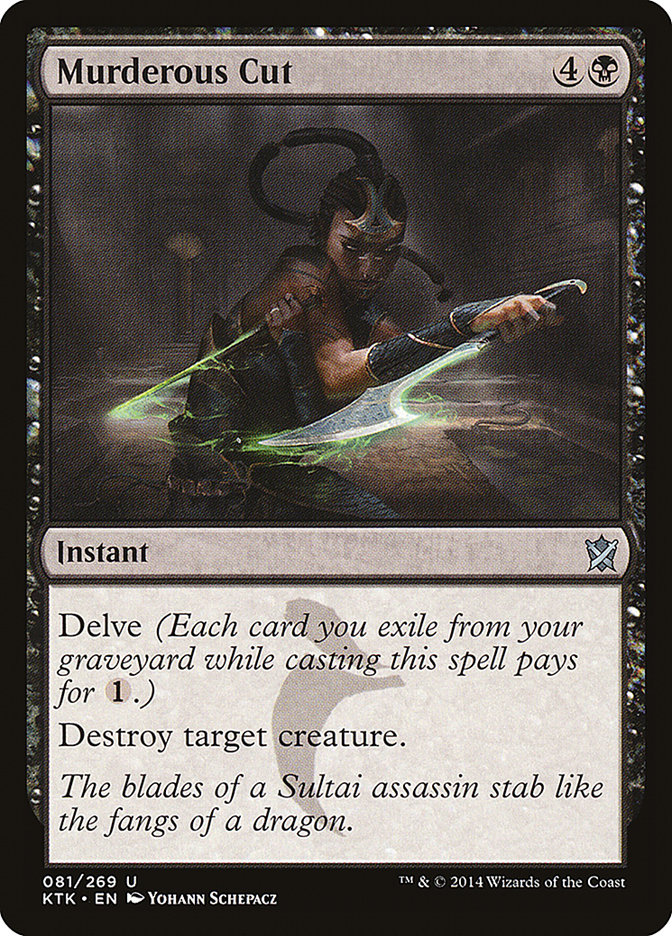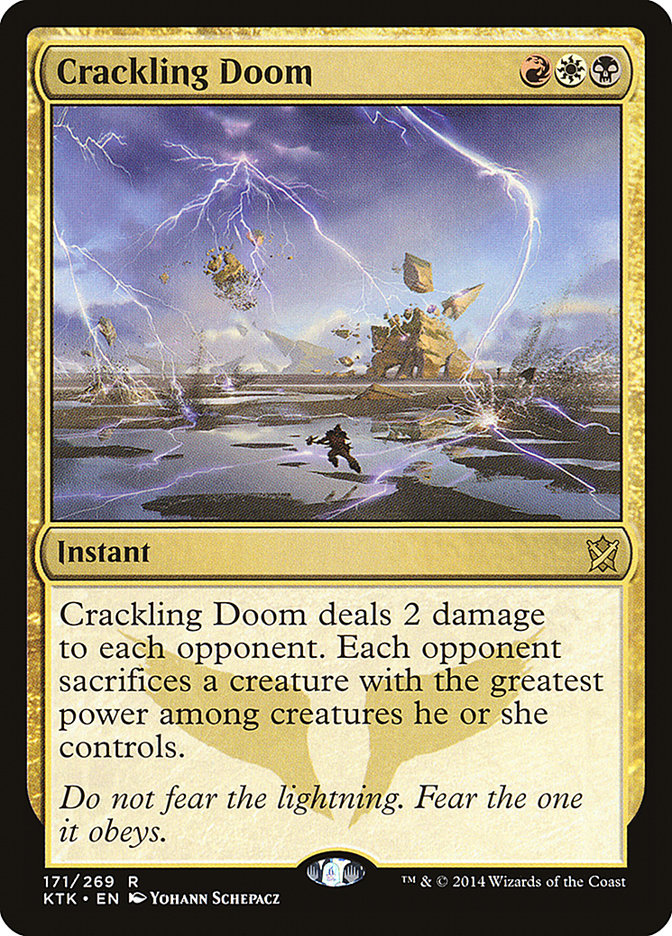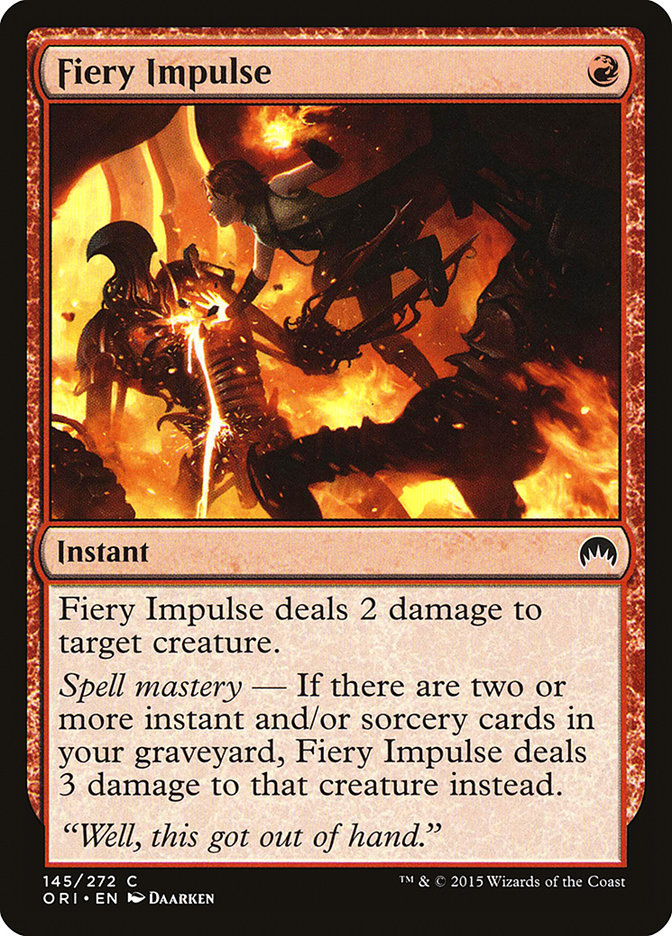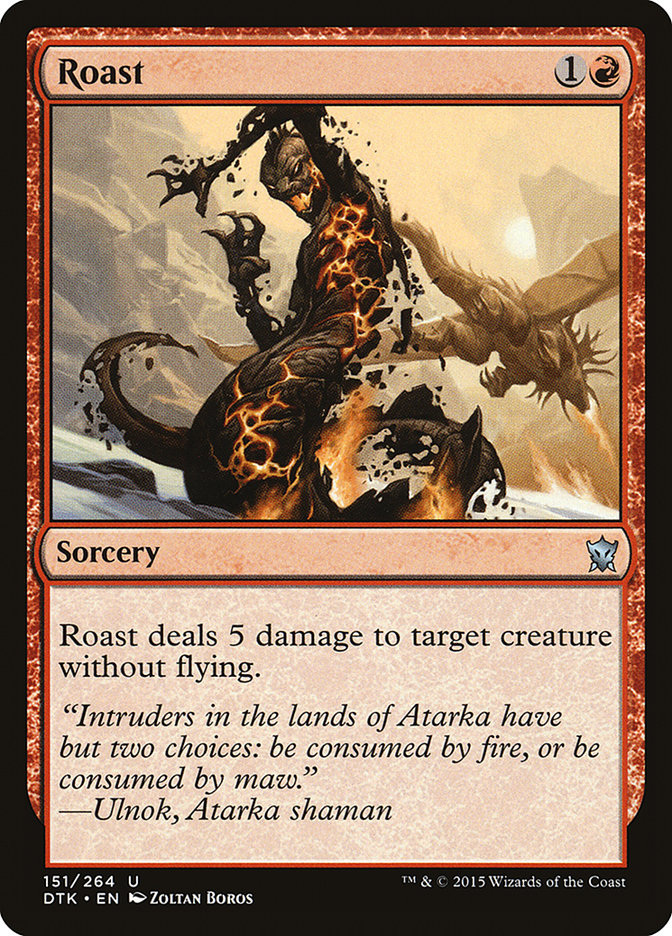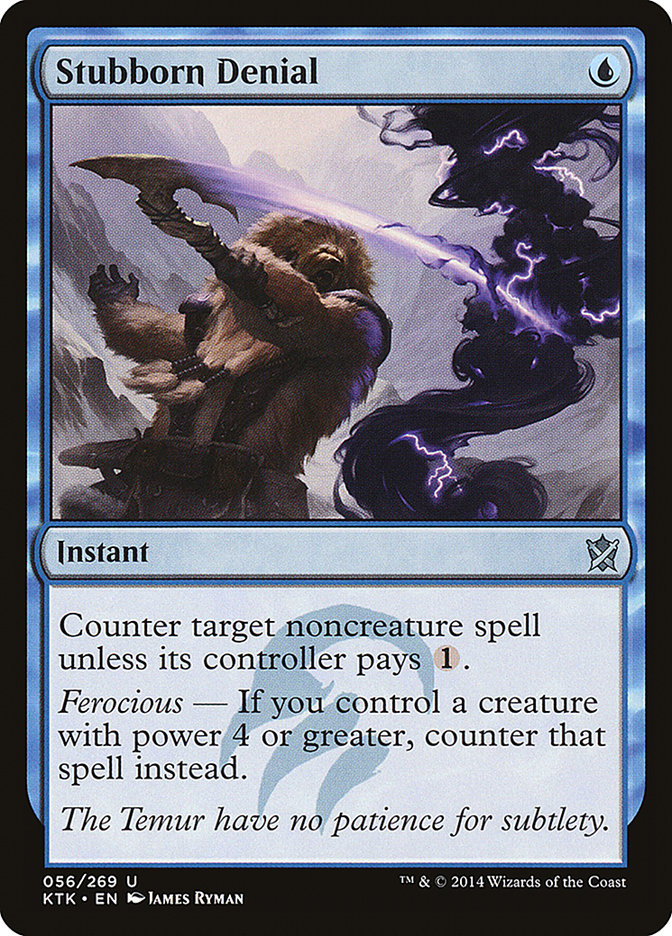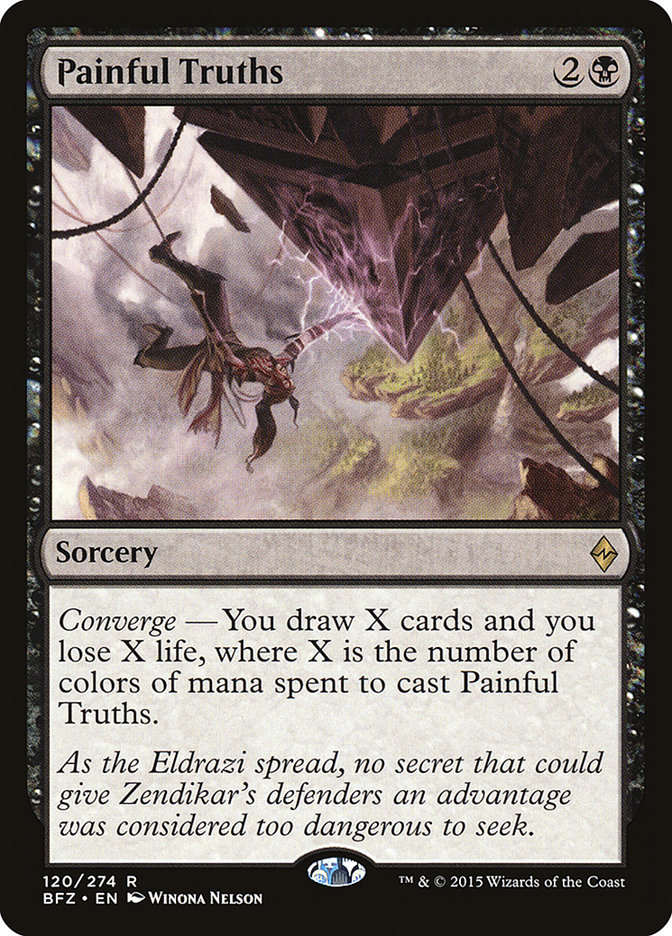By the time you read this, the #SCGINVI in Las Vegas will likely have begun. Hopefully, I’ll have figured out a deck I’m happy with by then, but given that it’s Wednesday night when I’m writing this and I’m driving out tomorrow night, I don’t have very much time.
For as much as I sang the praises of the Magic Online leagues last week, I have discovered they are not good for the stage in deck evolution when you’re still tinkering with things and trying out a lot of new ideas. That’s where I’ve been with Temur Black recently. I’ve run into some fellow SCG stalwarts who were clearly also testing for the #SCGINVI, like Jim Davis and Gerry Thompson, and my matches with each of them sent me back to the drawing board to rethink my sideboard strategies after I lost two straight despite winning game 1 of each match. I found myself dropping out of unfinished leagues simply because I wanted to try out new ideas sooner. So long, precious play points.
Here’s some things I’ve learned in my recent forays:
There’s a Lot of Good Removal in Standard
…and it’s very easy for decks to play a whole lot of it. In my matches against Jim and Gerry, I found myself managing to pull out narrow game 1 wins with one last unanswered creature, but once we went to the sideboard, both of them had just an outrageous amount of removal and it was almost impossible for anything I played to stick. I had Duresses and Dispels to protect my creatures, but they had them too, and used them to either strip my hand of disruption to ensure their removal could land, or snag my removal spells to let them stick something like Jace – which, of course, represented even more removal.
The whole idea of the Temur Black deck is to stay one step ahead of your opponent with efficient creatures and mana acceleration, and to use your removal and countermagic to keep it that way. But that just doesn’t work when your opponent is able to answer your first two or three creatures and then reload their hand with something like Painful Truths. If that weren’t bad enough, they’re also threatening to take over the game with Jace, Soulfire Grand Master, or Dragonmaster Outcast. It’s an attack from all angles, and it feels nearly hopeless.
As I mentioned last week, it feels like the best way to combat these kind of strategies is with permanents they can’t so easily interact with, like planeswalkers and enchantments. I’ve actually been really happy with Kiora, who can often trade with a card like Crackling Doom while effectively drawing you two cards in the process. One of those cards is always a land, sure, but you get some selection in the deal, and there’s additional value in the cards you don’t choose going to your graveyard as well. It can fuel delve, for starters, but it can also help pack your graveyard with other relevant goodies. More on that in a moment.
Stubborn Denial is Mostly Worse Than Dispel
Related to the above. This has been a sad lesson to learn, but I’m pretty sure it’s true. Yes, there are some matchups like Four-Color Rally, Esper Dragons, or Eldrazi Ramp where there are powerful sorceries or planeswalkers that you’re interested in countering, but they make up a relatively small percentage of the field. And even in those instances, you’ll often find yourself forced to use your countermagic to protect your one big creature on the battlefield rather than save it for a big bomb, simply because it won’t be effective otherwise. I tried swapping out one Stubborn Denial for a Dispel in my maindeck like I mentioned last week, and on multiple occasions the Dispel saved me in a spot where Denial would not because I didn’t have a four power creature on the battlefield.
While this is a disappointing realization to have, it is also somewhat liberating, since moving away from Stubborn Denial opens up a lot of different deckbuilding possibilities.
Card Advantage is King
Perhaps this is an overstatement due to the nature of the games that I played – mostly against decks other than Atarka Red – but the nature of the mana in Standard right now and the plethora of efficient removal that it enables decks to play means that a huge percentage of games come down to a battle of attrition. If it’s difficult for players to keep threats on the table, the player who is able to generate more threats and answers than the opponent is going to come out on top.
A good example of this principle in action is Todd Anderson’s continued success with a Jeskai Black deck that eschews one of the cards that has been most central to Jeskai decks since the clan had a name – Mantis Rider. Todd has recognized that all of his opponents are prepared for Mantis Rider, and that damage – even in hasty, flying three point chunks – isn’t the way that he’s going to win games. Sure, ultimately he’s going to reduce his opponent to zero, but he’s going to do it by grinding their resources down to a pulp with efficient removal spells and card drawing.
Seriously though – look at this deck:
Creatures (9)
Lands (26)
Spells (25)
- 2 Duress
- 4 Crackling Doom
- 2 Utter End
- 2 Murderous Cut
- 2 Treasure Cruise
- 3 Ojutai's Command
- 2 Roast
- 2 Kolaghan's Command
- 4 Fiery Impulse
- 2 Painful Truths
Sideboard

Every single card in Todd’s Top 8 deck from #SCGDEN is either a land, an efficient interactive effect, or some way to generate card advantage. He has not only the now ultra-popular Painful Truths but Treasure Cruise and Kolaghan’s Command on top of it. Even the creatures are card advantage effects! Soulfire Grand Master can completely run away with a game if left unchecked, to say nothing of Jace or Dragonmaster Outcast. Todd’s deck just wants to efficiently trade with everything the opponent does and then overwhelm them in raw resource advantage.
This deck is very similar to that which both Jim and Gerry piloted against me on Magic Online, and they pretty much just destroyed me. It’s just set up incredibly well against what my deck is trying to do on a structural level, and I didn’t feel like it was solvable without radical changes.
So I got a little radical.
Creatures (22)
- 4 Rattleclaw Mystic
- 2 Tasigur, the Golden Fang
- 4 Den Protector
- 4 Deathmist Raptor
- 2 Jace, Vryn's Prodigy
- 2 Nissa, Vastwood Seer
- 4 Woodland Wanderer
Planeswalkers (4)
Lands (25)
Spells (9)

This is still very much a work in progress, and it may very well be terrible. But my experiences against the removal overload out there as well as my decision to move away from Stubborn Denial led me back to the Deathmist Raptor + Den Protector package. Without the need to support ferocious, I was able to shift away from Savage Knuckleblades (as much as it might pain me) and toward a creature base that better stands up to removal.
I’m actually still very much on the fence about the inclusion of Woodland Wanderer. While it’s just a big dumb idiot who dies to removal in a lot of matches, in others – like against Atarka Red – he provides both offense and defense in a single card that’s out of range of their usual big-dumb-idiot removal like Roast. The fact that you can put your opponent on a clock – and a very fast one, at that – while keeping up a huge blocker is a very big deal, enough that I think the big tree is worth including despite its penchant for dying horribly to Crackling Doom.
Thankfully, the happy tree is the only creature in the deck who’s anything like that. Deathmist Raptor and Den Protector are obviously great in long attrition fights, as we learned last season with the rise of G/W Megamorph. They both happen to pair very well with Kiora, since she can dig for the missing piece in the chain as well as dump extra copies into the graveyard to accelerate the process. Nissa offers similar immediate value and an added long-term plan, threatening to flip and take over the game if she can stay in play.
Jace may seem somewhat out of place, and I’m not totally sold on him yet, but he’s obviously one of the strongest cards in the format, and he’s definitely powerful if he’s able to flip against an opposing creature deck. Thankfully, Jace himself and cards like Soulfire Grand Master mean that most decks in the format are “creature decks,” so you can find use for your removal spells even against a control deck like Todd’s that we looked at above. Jace, too, benefits from Kiora dumping extra cards in the graveyard, both to flip him faster and to offer you a greater variety of spells to flash back.
The spell in this deck that’s probably the most exciting to flash back with Jace – and which I kind of want to play even more copies of, though I’m not sure how to fit them – is Kolaghan’s Command. Kolaghan’s Command is the card that I turned to when I got super fed up with losing to these Jace/Soulfire Grand Master control decks. I hate having a lot of removal in my deck against them, because it rots in my hand half the time and keeps me from applying pressure, but if I don’t have it a single unanswered Jace or Soulfire Grand Master can just take over the game. But with Kolaghan’s Command? Not only does your removal spell for Jace and Soulfire Grand Master not have to sit and rot in your hand like a Draconic Roar or Fiery Impulse when your opponent doesn’t have one of them to play but you get to be the one playing the card advantage game when you return a creature to your hand while killing theirs.
Might I suggest a Den Protector as your target? Now that’s what I call value.
Like I said, I’m really not sure about this deck just yet. I definitely need to work on the mana, since I pretty much just ported over my old land to the new shell. But I’m certainly excited to play with it more if I can actually find the time to do that between now and when the #SCGINVl actually starts.


